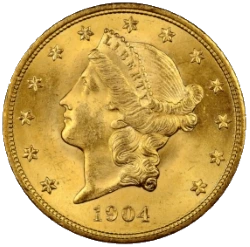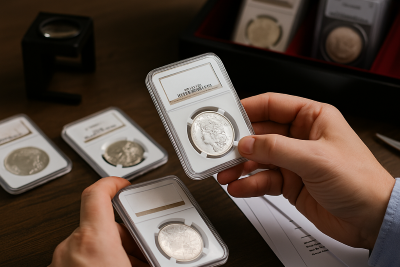Investing in Rare Coins
The Evolution of Rare Coin Markets
Throughout history, rare coins have exhibited remarkable profit potential, transcending the mere material worth of the metal they’re composed of. Over the past few decades, the landscape of the rare coin investment market has undergone significant transformations. The advent of third-party grading services in the 1980s revolutionized coin grading, mitigating some of the risks associated with rare coin investment in this domain. Moreover, the proliferation of the internet has democratized access to knowledge concerning coin collecting, rare coins, and the art of acquiring them.
Getting Started in Rare Coin Investment
Finding Mentorship and Resources
For novices delving into the realm of rare coin investment, seeking guidance from an experienced collector can prove invaluable. Mentors can assist in navigating the intricacies of researching the present and potential future value of coins. Additionally, individuals can immerse themselves in this sphere by attending coin shows, perusing literature from reputable sources like Coinage Magazine, engaging with coin dealers, and becoming members of organizations such as the American Numismatic Association.
Building a Diversified Portfolio
Similar to any investment venture, diversifying one’s coin portfolio is key to minimizing exposure to market fluctuations and maximizing potential returns in rare coin investment. Incorporating a variety of U.S. coins, as well as precious metals like gold bullion coins and classic gold coins such as the double eagle, enhances portfolio resilience.

Investment Strategies and Timeframes
Long-Term vs. Short-Term Approaches
It’s worth noting that rare coin investment is not geared toward short-term gains. While coin flipping—a strategy centered on swift turnaround for profit—exists, it entails inherent risks. Engaging in coin flipping involves acquiring low-mintage coins directly from the mint with the aim of promptly selling them for a higher price. However, failure to capitalize on selling opportunities or an oversaturated market can lead to financial losses in rare coin investment.

Understanding Market Dynamics
Market Volatility and Supply andDemand
The rare coin investment market is not immune to fluctuations; indeed, it can be subject to volatility. Coin valuations are contingent upon the principles of supply and demand. A surge in demand for a particular coin or series can drive prices skyward, only to witness a subsequent decline if interest wanes. Professional auction houses like Heritage Auctions provide valuable market data for rare coin investment decisions.
Unique Characteristics of Rare Coins
Unlike the uniformity of company shares, rare coins possess unique attributes that affect rare coin investment valuations. Even coins sharing identical variations and grades may command different valuations due to nuanced discrepancies, such as variations in appearance. This inherent distinctiveness renders rare coin investment inherently unpredictable but potentially rewarding.
Essential Knowledge for Success
Learning Valuation Methodologies
Embarking on a journey into rare coin investment necessitates acquainting oneself with valuation methodologies. Seeking mentorship, consulting literature, attending coin shows, and participating in coin clubs are effective avenues for acquiring such knowledge. While rare coins typically appreciate in value over the long term, it’s essential to acknowledge the absence of guarantees regarding future valuation trajectories in rare coin investment.
Investment Security and Authentication
Avoiding Counterfeits and Ensuring Quality
In contrast to purchasing stocks through established brokers, delving into rare coin investment entails a degree of complexity. Vigilance against counterfeit or tampered coins is paramount, as these can undermine the integrity of one’s rare coin investment. Opting for coins certified by reputable entities like the Professional Coin Grading Service (PCGS) or Numismatic Guaranty Co. (NGC) enhances both security and marketability in rare coin investment.

The Promise of Rare Coin Investment
Rare coin investment holds the promise of not only an engaging hobby but also a potentially lucrative avenue for long-term financial growth within a well-rounded investment portfolio. Whether you’re interested in exploring popular gold coin denominations or learning about key dates every collector should know, the world of rare coin investment offers both educational value and investment potential for those willing to dedicate the time to learn and understand this fascinating market. For additional market insights, consider resources like The Greysheet for current pricing information.
Similar Posts
Rainbow Toned Coins
ByTimRainbow Toned Coins: A Collector’s Guide to Color, Rarity, and Value Among the most visually captivating coins in numismatics, rainbow toned coins have carved out a passionate niche among collectors. Their vibrant hues—ranging from electric blues and fiery reds to subtle purples and golden ambers—are not just beautiful; they’re the result of chemistry, time, and…
Commemorative Coin History
ByTimCollectors are drawn to commemorative coins for their limited mintage, unique designs, and historical significance.
Digital Money Explained
ByTimCryptocurrency is a decentralized digital currency that allows peer-to-peer transactions without needing a central authority like a bank or government.
Saddle Ridge Hoard
ByTimSaddle Ridge Hoard: America’s Greatest Buried Treasure Discovery In 2013, a couple walking their dog in California’s Gold Country unearthed one of the most extraordinary buried treasures in U.S. history. Known as the Saddle Ridge Hoard, this cache of over 1,400 gold coins—hidden for more than a century—has fascinated collectors, historians, and treasure hunters alike….
1933 Gold Double-Eagle
Well gather round, folks! It’s time to talk about one of the most intriguing and valuable coins in the history of the United States – the 1933 $20 Double-Eagle gold coin. You might be asking yourself, “What’s so special about this coin? It’s just a piece of metal with a pretty picture on it, right?”…
Colonial Coinage
ByTimColonial Coinage in America Early colonial coinage in America emerged from necessity when the North American colonies lacked sufficient British currency before 1792. Consequently, colonists relied on diverse alternatives including foreign coins, tokens, and locally-produced currency. Furthermore, this shortage drove creative monetary solutions across different colonies. Popular Topics • 1785 Bar Cent – A notable…

 '
' 




